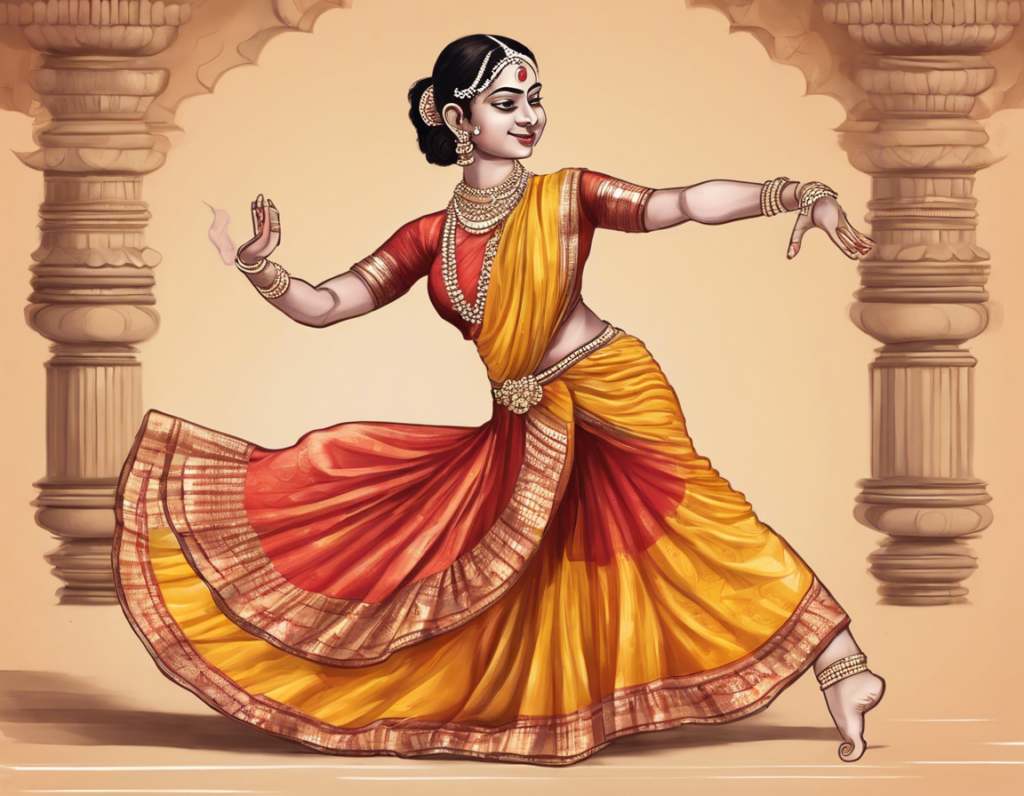
Bharatanatyam is a traditional Indian form of classical dance that originated in the temples of Tamil Nadu. It is renowned for its grace, purity, and sculptural poses that are accompanied by intricate footwork and hand gestures. Mastering Bharatanatyam dance steps requires dedication, practice, and a deep understanding of the art form. In this comprehensive guide, we will delve into the essential elements of Bharatanatyam dance steps, breaking down the key movements, postures, and techniques that are integral to this ancient art form.
Bharatanatyam traces its origins back to the temples of Southern India, where it was performed as a sacred art form dedicated to the gods. Over the centuries, it has evolved into a highly stylized form of classical dance that combines both artistic expression and storytelling.
Abhinaya is the art of expressive storytelling through facial expressions, eyes, and body language. It is a crucial aspect of Bharatanatyam that allows the dancer to convey emotions and narratives with depth and authenticity.
Consistent practice is key to mastering Bharatanatyam dance steps. Dedicate time each day to rehearsals, focusing on both technical elements and expressive aspects of the dance.
A knowledgeable and experienced teacher (Guru) is essential for learning Bharatanatyam correctly. They can provide personalized feedback, correction, and guidance to help you improve your skills and understanding of the art form.
Pay attention to the details of each movement, from the positioning of your feet to the alignment of your body. Bharatanatyam is a precise and disciplined dance form that requires meticulous attention to every gesture and step.
When performing, immerse yourself fully in the character and storyline of the dance. Channel the emotions and narrative through your expressions, gestures, and movements to create a captivating and authentic performance.
Bharatanatyam is intricately linked to Indian classical music, with dancers often performing to live music or recorded tracks. Develop an understanding of rhythm, melody, and musical cues to enhance your dance performances and synchronize your movements with the music.
How long does it take to master Bharatanatyam dance steps?
Mastering Bharatanatyam is a lifelong journey, but progress can be seen with regular practice and dedication. It typically takes years of training to achieve proficiency in this intricate dance form.
Can anyone learn Bharatanatyam, regardless of age or background?
Bharatanatyam can be learned by individuals of all ages and backgrounds. Starting at a young age is beneficial, but adults can also begin their training and progress at their own pace.
Are there any specific attire and accessories required for Bharatanatyam performances?
Traditional Bharatanatyam attire includes a saree for women and dhoti or pyjama for men, along with jewelry and adornments. Accessories such as ankle bells (ghunghroo) are also worn during performances.
Is it necessary to learn the theoretical aspects of Bharatanatyam along with the practical dance steps?
Understanding the theoretical aspects of Bharatanatyam, including its history, storytelling techniques, and music, can enhance your overall appreciation and performance of the dance form.
How important is collaboration and synchronization with musicians during Bharatanatyam performances?
Collaborating with musicians and understanding the nuances of Indian classical music is essential for Bharatanatyam dancers. Synchronization with the music adds depth and beauty to the performances.
Mastering Bharatanatyam dance steps is a transformative and enriching journey that requires dedication, discipline, and a deep appreciation for the art form. By understanding the fundamental elements of Bharatanatyam, practicing with commitment, and immersing yourself in the storytelling and expression of the dance, you can truly embody the grace and beauty of this classical Indian tradition. Whether you are a beginner or an experienced dancer, embracing the nuances of Bharatanatyam will not only enhance your skills but also deepen your connection to this timeless art form.